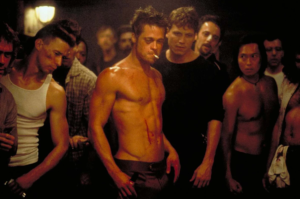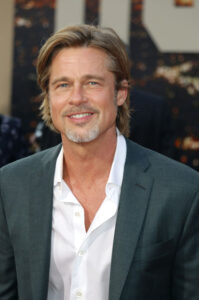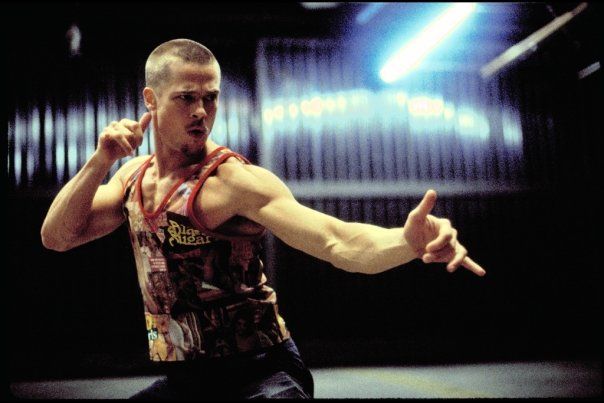By Sean Zucker –
When Brad Pitt was thrust into the public eye in 1991’s Thelma & Louise, the rare combination of leading man charisma and effortless charm was evident. Yet one trait of the future megastar was even more glaring – his insane abs. Beyond his core, Pitt was then and remains today a complete physical marvel and it turns out there’s a simple explanation. Fitness experts have long touted the star’s work out regime, noting it is not only massively effective but well ahead its time.
Brad Pitt’s exercise program tends to emphasize being lean over being yoked. Since first publicly shredding for a role in 1999’s Fight Club, Pitt has long demonstrated a willingness to accept these unique benefits over the towering presence of bulky and mega-muscled leading men, such as Dwayne “the Rock” Johnson or Sylvester Stallone. It’s a wise decision on Pitt’s part because the benefits are not only plentiful, they’re backed by science.

Brad Pitt in Fight Club (20th Century Fox)
According to Australian lifestyle site Viw, lean muscle mass that someone like Pitt displays can directly facilitate weight control by altering the metabolism. Muscles constantly burn calories, even when they are at rest. So, by increasing lean muscle mass, it is easier to maintain a higher metabolism and control weight, Viw claims. There are other more benefits as well. The site reports that lean muscles increase mobility, reduce the risk of injury, improve healing and enhance the overall quality of life by lowering stress levels and combating depression.
The major issue in bulking up versus getting lean and cut seems to be the overall calorie and fat intake necessary for the build. Norwegian School of Sport Sciences examined the downside of this strategy by focusing on its impact on athletes, the individuals most equipped to achieve it. Following a randomized examination of thirty-nine elite athletes, the school warned that the excess energy intake required in a diet designed to increase muscle density can lead to misguided weight-gain. Ultimately, the school reported that this type of intake should be considered carefully due to undesirable increases in body fat.
So how does Pitt fixate on lean muscle? According to Men’s Health, it’s all about high intensity focused programs. Beginning with his prep for the ultra-cut, often shirtless Tyler Durden in Fight Club, Pitt divided his workouts to focus on a different muscle group each day, before ending the week with two days of intense cardio.
For Fight Club, his routine focused on the chest on Mondays via a series of altering press-ups, presses and flies. On Tuesday he zoned in on the back with pull-ups, rows and deadlifts. Then shoulders on Wednesday before dedicating Thursday to various curls and dips for biceps and triceps. Friday and Saturday found Pitt doing an hour each day of hardcore cardio at 80 to 90 percent maximum heart rate. On Sunday, like the lord, he rested. 
This brand of isolated and group specific training has gained a lot of traction and popularity in recent years and for good reason. GQ noted that Pitt weighed in just below 155 pounds measuring between merely 5 and 6 percent body fat during the film’s production.
Most recently, Pitt toned up for his role as disgraced but effective stuntman Cliff Booth in last year’s Once Upon A Time In Hollywood. According to Men’s Journal, Pitt followed a similar regime for the role, which not only honed his body but aided his fight choreography performance by enhancing his ability for more limber and fluid movements.
At 56 years old, Brad Pitt remains a physically impeccable human specimen. Okay, chances are you’re not—most of us, in fact, don’t look like Pitt for a host of reasons including most predominantly not having his superior genetics. Still, this doesn’t mean we can’t follow his lead and adopt his approach to working out. If nothing else, it may help you age just as gracefully.












